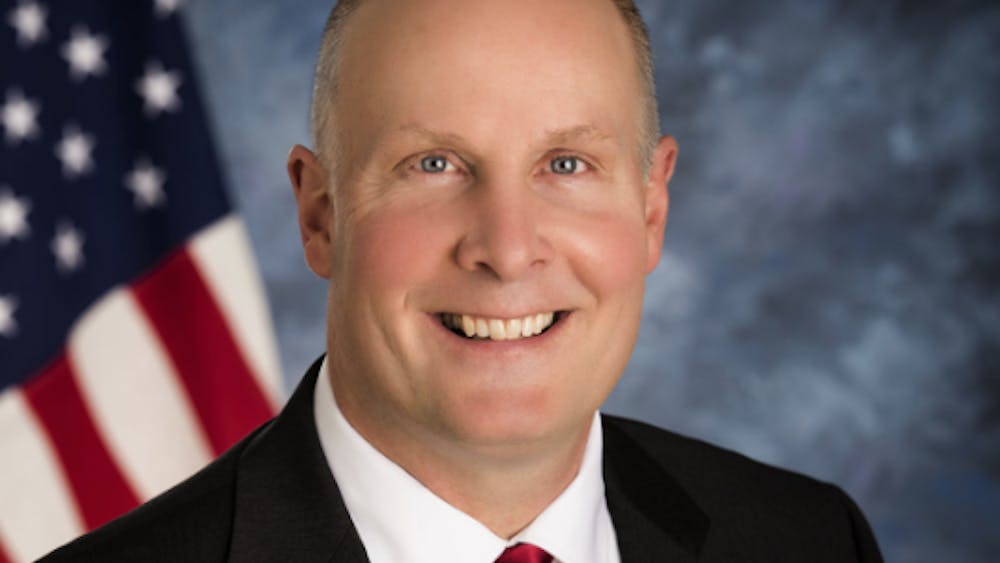Protesting the President
After two days of celebrating a new commander in chief about 500,000 people took to the streets to deliver a very different message
WASHINGTON — Hundreds of thousands of women of all ages, races and religions packed tightly into the streets of Washington D.C., sending a clear rebuke to newly inaugurated President Donald Trump.
The Women’s March on Washington, which started as a Facebook event following Trump’s election on Nov. 8, brought more than 500,000 people to the nation’s capital. The protest was so large that more than three city blocks were shut down in every direction from the march’s main base on Independence Avenue.
Marchers stormed Washington D.C. in a sea of pink hats and homemade signs, while others around the nation and globe marched in cities as varied as Lansing, Paris, France and Tokyo.
For Sarah Johnson, Jan. 21 wasn’t a march in the traditional sense. The Utah resident navigated the crowds in her wheelchair and was there to protest Trump’s dismissal of the Americans with Disabilities Act.
“I’m concerned we’re going to see a lot of government regulations that make things for me possible go away,” Johnson said.
Because she grew up before the ADA was implemented, Johnson said she did not have equal access to education.
“I was put in a low reading class because the advanced reading class was on the second floor of my school and I couldn’t get there,” she said. “These are the kinds of things you see happening when you take (ADA) away.”
As a person with disabilities, Trump’s presidency is deeply troubling, but Johnson said it’s only one issue to be worried about in a long list of grievances.
“Women like myself, we don’t have access to equal opportunity to employment, insurance rights — we end up staying in unhealthy, abusive relationships because it’s the only way we can get insurance,” she said. “This is a domestic violence issue, a women’s issue and a disabled issue.”
As for the atmosphere in Washington just one day after Trump took office, Johnson said the march was “amazing,” and everyone she met was supportive. She made extra “pussy hats,” the signature pink hat worn by many women who took part in the march, to give away to fellow activists.
Becky Payne wore the signature pink knit hat and stood on the sidelines of the march, holding a protest sign.
“This is important for solidarity and numbers — just to be visible,” Payne said. “I just think it’s important for the current administration to see just how many people are unhappy and willing to not stop until things are better for everyone.”
Women from the metro D.C. area and out-of-state banded together — waking up before dawn to make sure they could march. Metro rail and bus stations in Washington had to cancel stops throughout the morning due to overcrowding as protesters rushed to be part of the Women’s March movement.
Once there, the cavalcade spent the day showing the world how they felt about Trump in the oval office.
Central Michigan University professor Merlyn Mowrey said she sees the effects of “Trumpism” in her classroom.
“As a teacher, it concerns me,” Mowrey said. “I’ve actually had a student say to me that every opinion is equally true and not being able to separate an opinion from a judgment based in analysis and fact.”
The philosophy and religion professor said “fake news” was around well before Trump ran for office, but it’s been heightened by his campaign strategies and policies.
A threat to the education system in America was also a reason Libya Doman hit the streets of D.C. to protest Trump’s presidency.
As an art teacher for predominately poor, Spanish-speaking elementary children, Doman said she is afraid for her students.
“I don’t know what the future looks like for them, especially with Trump’s choice (Betsy DeVos) for the secretary of education,” Doman said. “She has no background in public education.”
Protestors chanted “dump Trump,” and “no justice, no peace,” but also narrowed in on calling out Trump’s cabinet picks like DeVos during the march.
Marchers focused on protesting issues that directly affect their demographic — including being disabled, black, Muslim, LGBTQ+ — but most supported each other in their distaste for Trump on multiple issues.
“I’m here because I’m against everything (Trump) stands for,” said Shandi Alexander, 42, of New York City. “I think he’s criminal and dangerous.”
Alexander said she came to the march because she’s worried of what her two young children will endure Trump’s negative effect on the country.
“I don’t know what to do, but (I) feel like this is the first step toward some type of action,” she said. “I don’t want this to be the end of our activism.”
The march was for women first but male allies for women’s rights also showed up on Saturday. Men young and old were seen holding signs and wearing the pink-pointed hats.
Raymond Kingfisher traveled to Washington to show his support, but also because of the fear that Trump would overturn decisions protecting the Standing Rock Indian Reservation from the North Dakota Access Pipeline.
“We’re water protectors,” Kingfisher said. “A lot of us go back and forth from Standing Rock and occupy that area for our future generations.”
Kingfisher is a Seattle resident and a member of the Northern Cheyenne Tribe. He said there is a real fear whether decisions made under former President Barack Obama to protect reservation land from the construction of the North Dakota Access Pipeline will be reversed in a Trump presidency.
“I’ve seen a lot of people that want to resist the presidency of Trump,” Kingfisher said. “I believe there is so much more support for his resistance, it’s evident of all the people here.”



